Handling the Heat: What Causes Asian Flush and How to Prevent It?
Our Complete Guide to Asian Flush, aka the Asian Glow
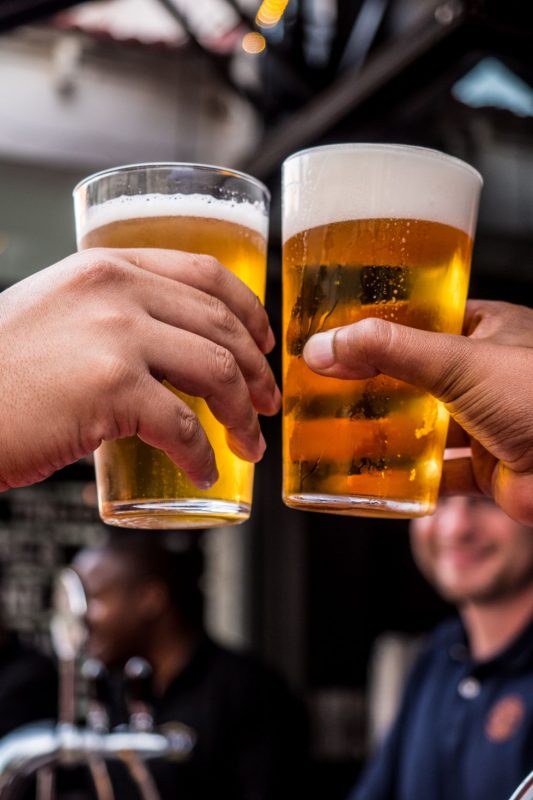
Thanks to our student Hannah Li for this wonderful insight into the infamous Asian Flush
“It was a Friday or Saturday evening; I was at home with some friends over. For some reason, I downed three quarters of a very low-proof hard cider, not thinking about the consequences.”
A few minutes later, I was red down to my shoulders, unreasonably warm, and could feel my head pounding to the beat of my heart.
Though it was certainly not the first time, I was experiencing the Asian flush.
Maybe you’ve heard of, or seen the Asian flush in action. Maybe you’ve suffered through it yourself, or maybe you’ve never heard of it at all!
Whatever the case, in this article we’re going to break down the Asian flush, incluing what it is, what causes it and how to avoid it!
Asian Flush – What Exactly Is It?
Asian Flush – What Causes It?
Asian Flush – How To Prevent It?
Asian Flush – Is it Harmful?
Asian Flush – Does It Affect Drinking Culture In China?
Asian Flush – Extra Resources
Asian Flush – FAQs
Asian flush – What Exactly Is It?
Asian glow, also referred to as Asian flush, is a slang term for Alcohol Flush Reaction (AFR), which affects about 36% of East Asians, including Japanese, Chinese, and Koreans.
While it’s not restricted to Asians only, it’s not as common among other ethnicity groups, with the exception of Ashkenazi Jews.
The second half of the term refers to the signature symptom of AFR, a red, flushed face.
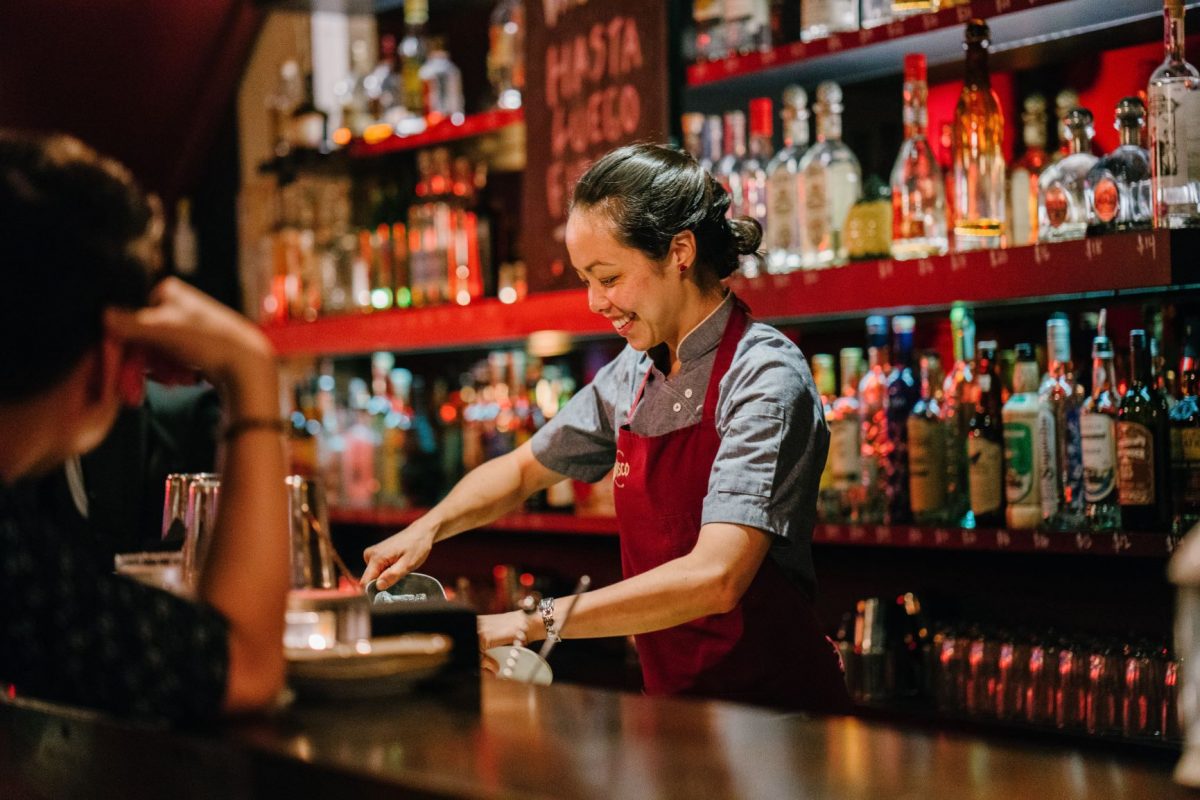
The “flush” or “glow” can even spread to the neck, shoulders, or entire body, and it can last anywhere from 30 minutes to several hours. Nausea, headaches, and rapid heart rate (basically hangover-type symptoms) often accompany AFR.
AFR could really just be considered one symptom of a broader condition, alcohol intolerance.
Other symptoms of alcohol intolerance include swelling around the eyes, restricted breathing, a stuffy nose, and/or dizziness, which is an all-around bummer for a night out with friends.
As a Chinese American, I’ve experienced Asian glow ever since I had my first drink.
For me, this means I can’t drink alcohol in large amounts, or very quickly or frequently.
Asians may experience AFR at different levels–some only have a mild flush. But I’ve always had to deal with an increased heart rate, congested nose, and possible headache, in addition to the embarrassment of a cherry-red complexion.

Chinese Food Therapy 食疗 shí liáo // A Beginner’s Guide
What is Chinese Food Therapy? There are many things to love about living in China, and one of them is of course, the food (see below)! There seem to be an unlimited amount of food options in China. Shanghai alone…
What Causes Alcohol Flush Reaction?
Let’s talk about it!
When you drink alcohol, your liver uses an enzyme to convert the alcohol into a toxic substance called acetaldehyde.
From there, another enzyme, called ALDH2, breaks down the acetaldehyde into acetic acid, which is harmless.
People with AFR have a genetic deficiency of the ALDH2 enzyme, causing the toxic acetaldehyde to build up in their system, up to 10 times more than the normal concentration, and cause unpleasant side effects.
Basically, people with AFR aren’t able to break down alcohol as efficiently as people without AFR!
One common misconception could be that a person with AFR may seem more intoxicated than they actually are.
However, this enzyme deficiency doesn’t affect the levels of alcohol in the blood, it just makes the drinker uncomfortable.
Asian Flush – How To Prevent It?
Since AFR is the result of an enzyme deficiency, there’s really no way to “cure” this issue.
Some medications, such as Zantac or Pepcid AC, can help diminish the symptoms of AFR, such as preventing the red flush.

But these medications don’t actually deal with the real issue of the toxic acetaldehyde build-up, so they may not be the best option.
In fact, some people think that these medications could be really bad for you, since the symptoms they prevent are the very symptoms that signal your body it’s time to stop drinking!
Obviously, the best way to prevent AFR is to not drink at all, but of course that can be difficult!
If you want to mitigate the symptoms of AFR, try eating a meal before drinking, drinking slowly, and drinking water between alcoholic drinks!
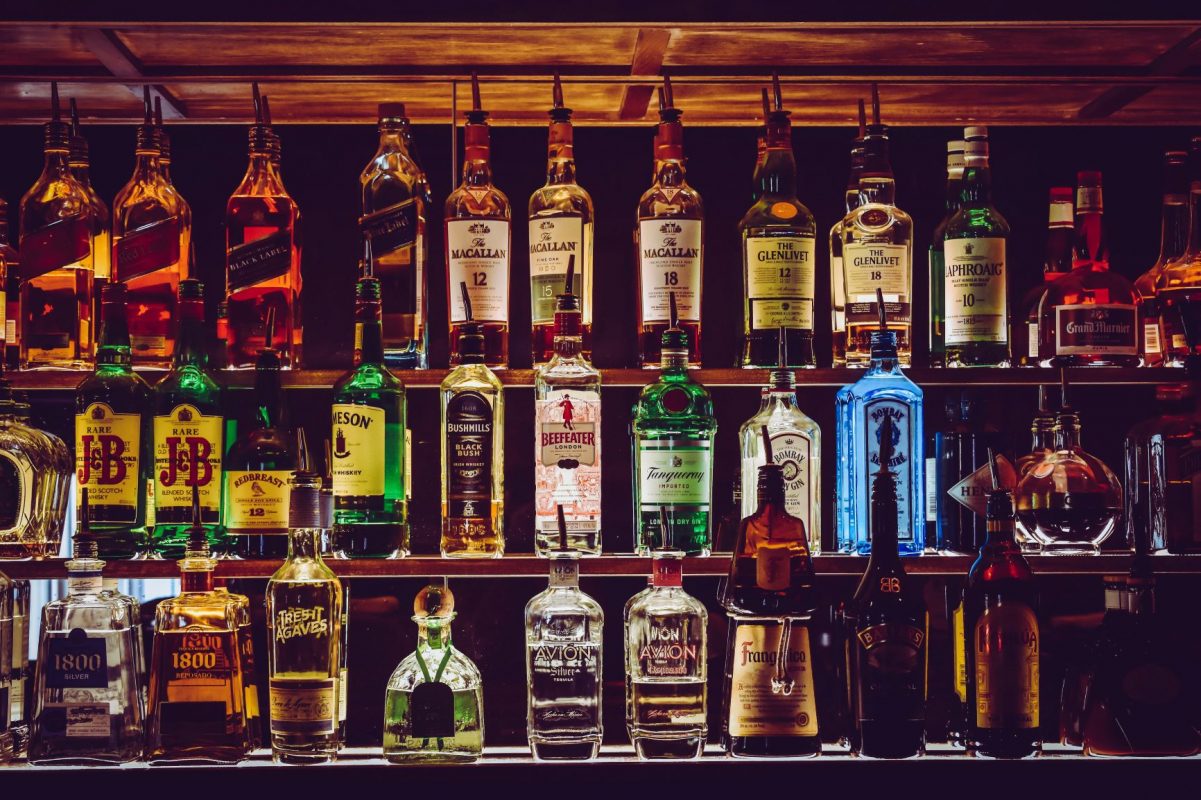
Asian Flush – Is it Harmful?
Here’s the good news: AFR is associated with lower rates of alcoholism, so at least its unpleasant effects have some benefits!
But, it’s also associated with an increased risk of oesophageal cancer, so if you or someone you know has AFR, drink carefully!
In addition to physical effects, AFR can also impact a person’s social life, since drinking and socializing or networking often go hand in hand.
In my personal experience, the glow can definitely be annoying or embarrassing, and it absolutely limits my drinking. That being said, It’s never stopped me from having a good time or making friends!
Asian Flush – Does It Affect Drinking Culture In China?
Although you might think that such a prevalent condition might reduce drinking rates among Chinese people, drinking culture is still huge in China.
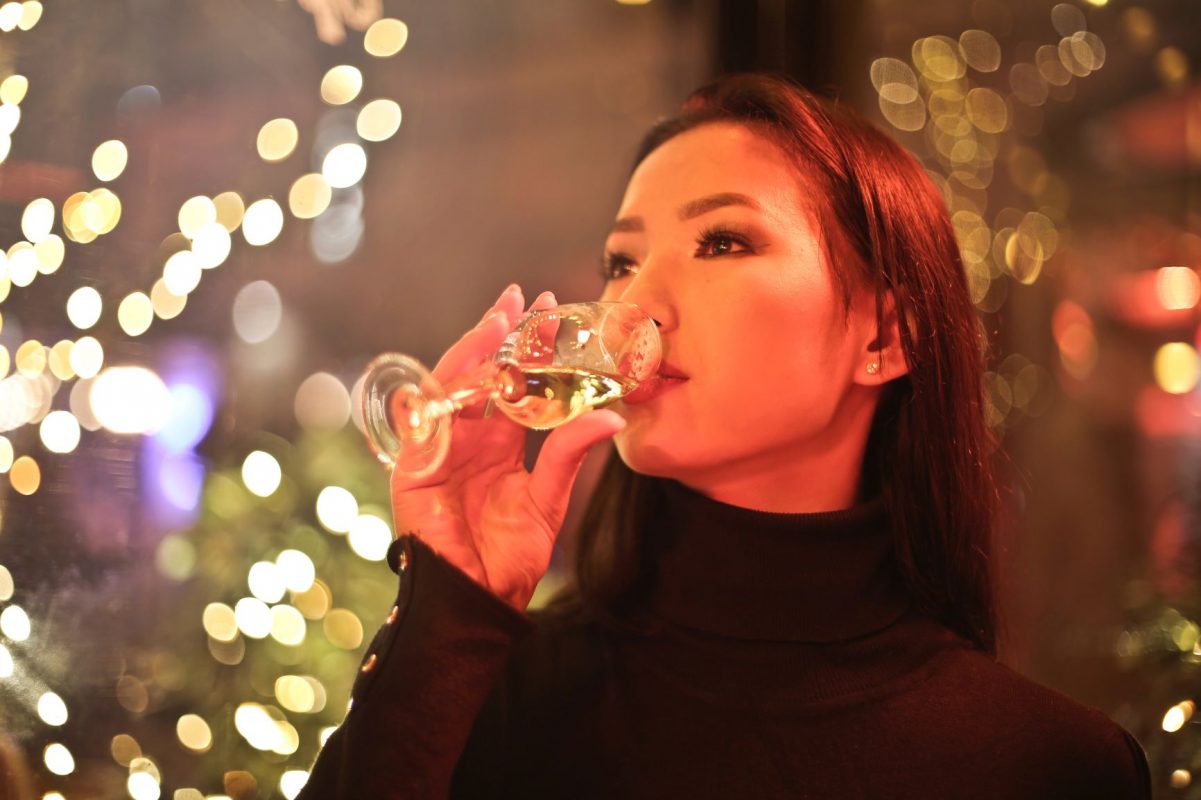
While many Chinese people are affected by Asian flush, many more are not!
Bars and liquor stores are around just about every corner. People drink while eating out, making business deals at restaurants, and singing karaoke (or KTV, as it’s more commonly called).
Or, they might pick up alcohol from a convenience store and take it home to drink.
According to 2016 data, the average Chinese person over the age of 15 consumes 7.2 liters of pure alcohol annually, 0.8 liters more than the global average. This breaks down to approximately one liter of wine consumed every week.
Chinese people drink all kinds of alcohol. Tsingtao and Harbin are two very popular brands of Chinese beer. Another classic Chinese drink is baijiu, which has a very high alcohol content. However, red wine and other types of foreign alcohol are also becoming more and more popular in China.
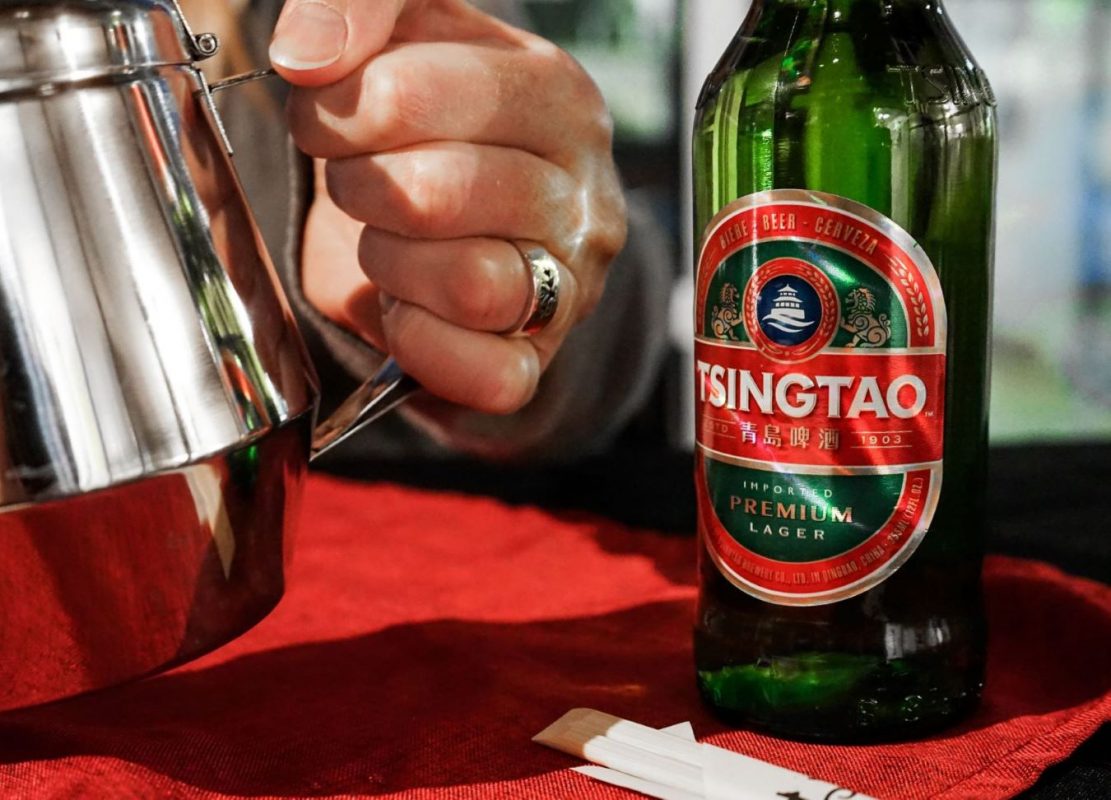
So I think it’s safe to say that Chinese people like to drink! Asian glow doesn’t seem to negatively affect drinking culture in China much at all.
Do you have Asian glow? Have you ever seen someone experience Asian glow? Tell us more about your experience in the comment section below!
Asian Flush – Extra Resources
If you’re interested in finding out more about Asian glow and drinking in China, check out these links!
- https://www.verywellhealth.com/facial-flushing-caused-by-alcohol-and-drugs-1069265
- http://www.yalescientific.org/2011/04/what-causes-asian-glow/
- https://getsunset.com/blogs/news/sudden-alcohol-intolerance#alcohol-intolerance-risks
- http://aldh2deficiency.com/alcohol-flush-reaction/
- https://getsunset.com/blogs/news/asian-flush-pepcid-zantac-zyrtec
- https://www.yoyochinese.com/blog/Ultimate-Guide-Drinking-China
- https://ourworldindata.org/alcohol-consumption
Asian Flush – FAQs
What is asian flush?
Asian flush, also known as Asian glow or alcohol flush reaction, is a condition that affects some people of East Asian descent when they consume alcohol. It is characterized by redness and warmth in the face, neck, and sometimes the chest
What are the symptoms of asian flush?
Aside from the classic redness, people may also experience increased heart rate, nausea, and headaches.
What causes asian flush?
Asian flush occurs because some individuals of East Asian descent have a genetic variation that affects their ability to metabolize alcohol. Specifically, they have a deficiency in the enzyme aldehyde dehydrogenase (ALDH), which is responsible for breaking down acetaldehyde, a toxic byproduct of alcohol metabolism. When acetaldehyde builds up in the body, it causes the symptoms of Asian flush.
How to prevent asian flush?
There is no guaranteed way to prevent Asian flush, however you could try limiting alcohol intake, drinking slowly, staying hydrated, drinking low-alcohol drinks and taking antihistamines.
How long does asian flush last?
The duration of Asian flush can vary from person to person and can depend on factors such as the amount of alcohol consumed, the individual’s metabolism, and their level of hydration.
In general, Asian flush symptoms can last anywhere from 30 minutes to several hours, depending on the severity of the reaction.
Want more from LTL?
If you wish to hear more from LTL Language School why not join our mailing list.
We give plenty of handy information on learning Chinese, useful apps to learn the language and everything going on at our LTL schools.
Sign up below and become part of our ever growing community.
FANCY LEARNING CHINESE ONLINE? Why not sign up to a 7 day free trial of our Flexi Classes.
![[𝗢𝗟𝗗] LTL Shanghai Logo](https://old.ltl-shanghai.com/wp-content/sites/3/logo-ltl-header.png)




4 comments
Wait so is Asian glow an allergic reaction?
Hi Maria,
Technically speaking, Asian flush isn’t an allergy. It can come across as one though!
LTL
对,我的哥哥和妈妈都有AFR. 他们的脸很太红了!
😂😂😂